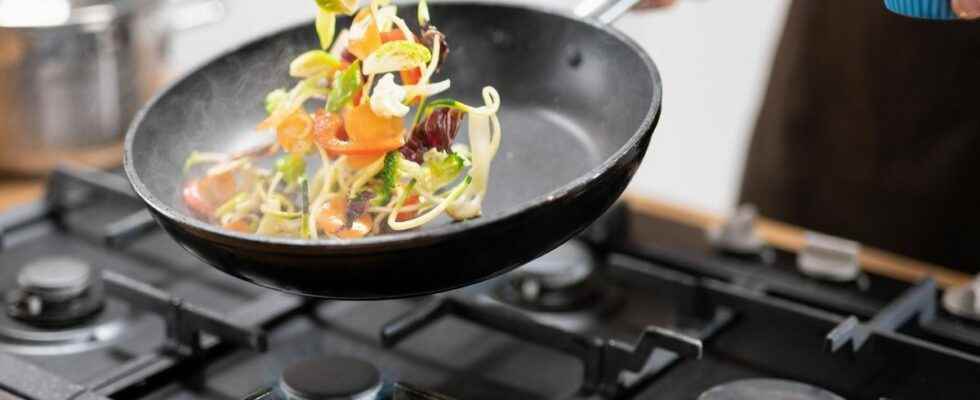Posted ,
Reading 2 mins.
Is the mention “PFOA-free” displayed on non-stick pans really a guarantee of health and environmental safety? The association 60 Millions de consommateurs has conducted investigations to verify the presence of this chemical compound, and potentially toxic, in these kitchen utensils.
60 Million consumers conducted the survey
The magazine which campaigns for better transparency and to protect French consumers conducted the investigation on the side of non-stick pans. Their objective ? Check, through a series of tests, whether these utensils dedicated to cooking food keep their promises in terms of the environment and the health of users.
The investigators therefore submitted 9 models of non-stick frying pans to the evaluation of several criteria, such as resistance to abrasion, resistance of the handle as well as the coating. They wanted to verify that the manufacturing materials were as harmless as the manufacturers claim.
On the hunt for PFOA and PTFE
One of the most common materials used to make a nonstick pan liner is Teflon, which is the brand name for polytetrafluoroethylene (PTFE). Indeed, it offers very interesting properties for cooking, in particular thanks to its ability to repel water and grease. Nevertheless, this matter has been the subject of many controversies since the 1990s.
Teflon, and specifically one of these chemicals, perfluorooctanoic acid (PFOA), is suspected of harming “fetal development”, but also to weaken the immune system and increase “the risk of developing cardiovascular disease, kidney or testicular cancer”, indicates the magazine.
Compounds sometimes banned in Europe have been found
This is the reason why, since July 4, 2020, it is forbidden to manufacture this molecule in Europe. For this reason, some manufacturers use the mention “guaranteed PFOA-free” to prove that they comply with this European directive. However, 60 million consumers specify that they “remain vague on the molecules used as a replacement”.
Indeed, since the tests revealed the potential “PFOA migration to food in three out of nine non-stick pans tested”. However, it is stated in the press release that “this substance was probably not used in the manufacture of the stoves, but it could have been introduced accidentally during the design, packaging or transport of the stoves”.
That’s not all, because traces of other perfluorinated compounds have been detected:
- PFHxA (in 1 pan);
- PFHxS (in another pan);
- PFOSA (in three pans).
One of the nonstick pans also releases aluminum (1.13 milligrams per pound of food), albeit at a level “below the recommended threshold of 5 mg/kg”.
The results also highlight another coating, called ceramic, which is actually a derivative of Teflon, in which are “includes minerals such as silicae.”
A call for transparency
In light of these findings, questions remain unanswered. This is the reason why the National Consumer Institute (INC), responsible for publishing the magazine 60 Millions de consommateurs, challenges the public authorities on the display “guaranteed PFOA-free”.
For him, the establishment of a “mandatory labeling” is essential for “inform consumers objectively about the materials used to manufacture cookware”.
It also calls for the prohibition of the concept “PFOA-free”, which has become a marketing argument. According to the statement, “This lack of transparency unquestionably penalizes consumers’ freedom of choice and conceals the potential toxic risk inherent in the components of these utensils.”.
